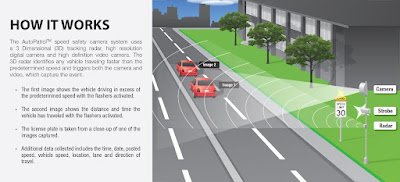School zone speed cameras are automated systems designed to monitor and enforce speed limits in school zones. Here's a general overview of how they typically work:
Detection: School zone speed cameras use various detection technologies, such as radar or laser, to measure the speed of vehicles passing through the designated area. These cameras are usually mounted on poles or structures near the school zone.
Speed Threshold: The cameras are programmed with a predetermined speed threshold. If a vehicle's speed exceeds this threshold, the camera captures a photograph or records a video of the violating vehicle.
Image Capture: When a vehicle is detected speeding, the camera captures an image or series of images, which typically include the vehicle's license plate. This visual evidence is used for identification and enforcement purposes.
Data Recording: The camera system records relevant data for each violation, including the date, time, location, and speed of the vehicle.
Violation Verification: Once the camera captures an image or video of a speeding vehicle, the recorded data is reviewed and verified by authorized personnel to confirm the violation. Human review is usually done to ensure accuracy and eliminate false positives.
Issuance of Citations: If the violation is verified, a citation or ticket is typically issued to the vehicle's registered owner. The citation includes information about the violation, the fine amount, and instructions for payment or contesting the citation.
It's important to note that the exact process and operational details of school zone speed cameras can vary depending on the jurisdiction and local regulations. The specific rules and procedures governing these cameras are typically established by local transportation authorities or law enforcement agencies. Therefore, it's always best to consult the specific laws and guidelines in your area for accurate and up-to-date information on how school zone speed cameras operate.
Where Are School Zones Cameras?
The use of school zone cameras varies from state to state within the United States, as it is regulated by individual state laws and local jurisdictions. Some states have implemented school zone camera programs as a means to enhance safety and enforce traffic laws near schools, while others may not have such programs in place.
States that have implemented school zone camera programs or have authorized their use in some capacity include:
- Arizona
- California
- Florida
- Georgia
- Illinois
- Maryland
- New Jersey
- New York
- Pennsylvania
- Texas
- Washington
Please note that this list is not exhaustive, and the regulations and specifics of school zone camera programs can vary within each state.











